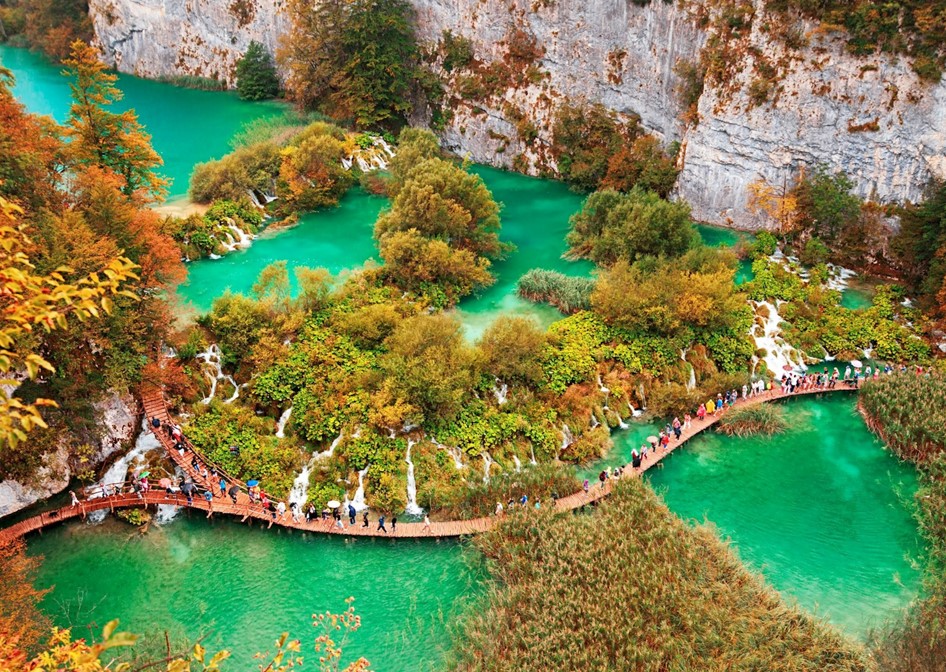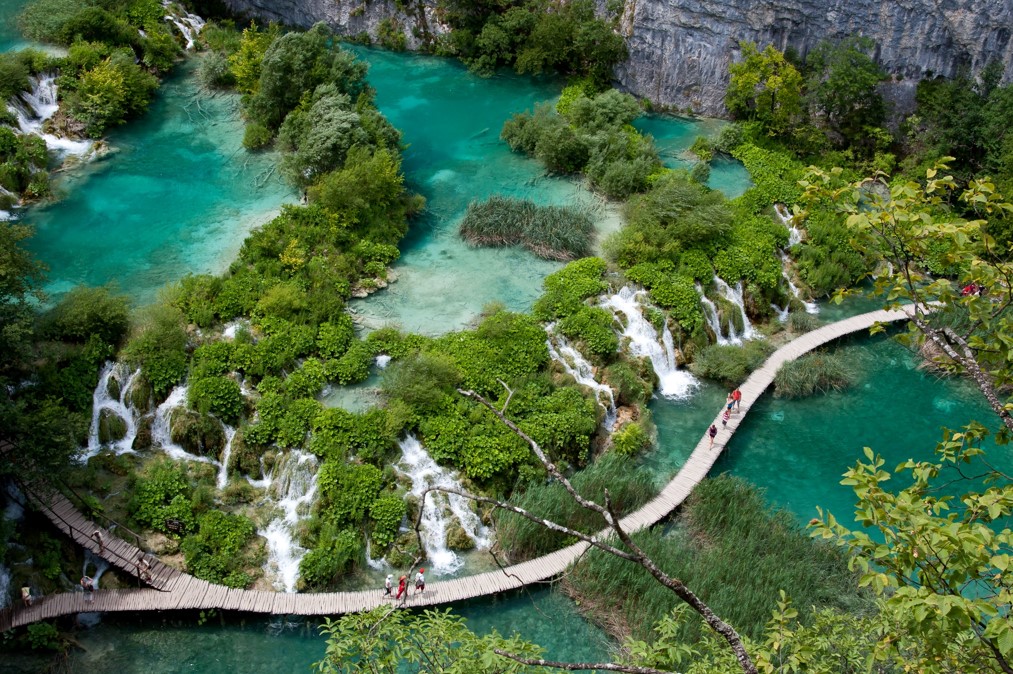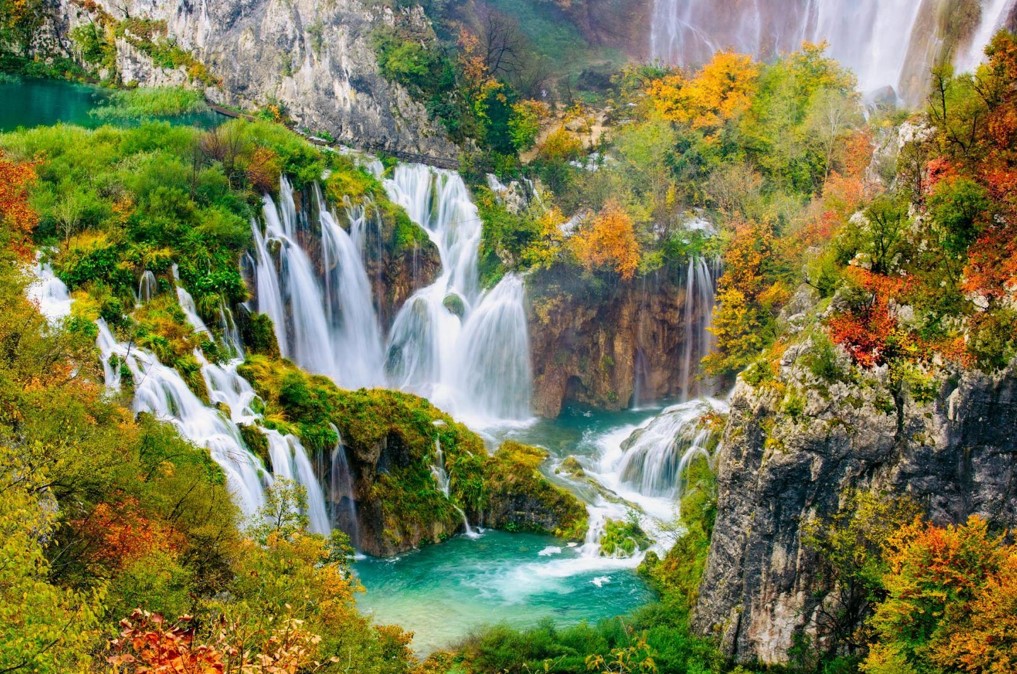Plitvice Lakes National Park
National park in Croatia
Plitvice Lakes National Park is one of the oldest and largest national parks in Croatia. In 1979, Plitvice Lakes National Park was inscribed on the UNESCO World Heritage List, due to its outstanding and picturesque series of tufa lakes, and caves connected by waterfalls. The national park was established in 1949 and is located in the mountainous karst area of central Croatia on the border of Bosnia and Herzegovina.
The important north-south road that passes through the national park area connects the Croatian hinterland with the Adriatic coastal region. The protected area is spread over 296.85 sq km. About 90% of this area is part of Lika-Saeng County, and the remaining 10% is part of Karlovac County. Every year, more than 1 million visitors are recorded. Subject to variable charges for entry, up to 300 kunas or around €39 per adult per day in summer 2022.
The national park is world-famous for its cascading lakes. Sixteen lakes are visible from the surface. These lakes are the result of the confluence of several small rivers and underground karst rivers. The lakes are all interconnected and follow the flow of water. They are separated by natural dams of travertine, deposited by the action of mosses, algae and bacteria. Particularly sensitive travertine barriers are the result of interactions between water, air and plants. Enclosed plants and bacteria accumulate on top of each other, forming a travertine barrier that grows at a rate of about 1 cm (0.4 in) per year.
The 16 lakes are divided into an upper and lower cluster formed by runoff from the mountains, which descend over a distance of about 8 kilometers (5.0 mi) from 636 to 503 meters (2,087 to 1,650 ft) elevation, aligned to the south. north side The lakes collectively cover an area of about 0.77 square miles, with water emerging from the lowest lake in the Korana River Formation.
The lakes are famous for their distinctive colors, from azure to green, gray or blue. The color changes constantly depending on the amount of minerals or organisms in the water and the angle of sunlight.
Plitvice Lakes National Park Rivers
Plitvice Lakes originates at the confluence of the Bijela Rijeka (English White River) and Crna Rijeka (English Black River) south of the park area. These rivers originate in the south of the municipality of Plitvički Leješkovac and converge at a bridge in this village. From this point to the lake, the body of water is called Matika (in English water flow, which can also mean origin or origin). At Liman Bay (also called Limun), part of the Proscansko Jezero, another small river flows into the lake. This river is fed by permanent springs; But the amount of water varies. Temporarily, water from other, usually dead creeks reaches Prošćansko jezero from the west.
The Plitvica River reaches the Plitvice Lakes chain at the northern end through large waterfalls. This place is called Sastavci (English confluence or composition). The water mass of Plitvice Lakes and the Plitvice River form the Korana River.
Properties of the underground
The underground configuration of Plitvice Lakes consists of several geological features. Generally, the entire area of Plitvice Lakes National Park can be attributed to the Southeast European karst area. Common features of these karst areas are brittle or porous rocks, mostly limestone or dolomite. This configuration creates various geological phenomena known as Dolina (sinkholes), polje, uvala, ponore, etc.
In the future, the analysis of groundwater courses may be an interesting field of research for speleologists. Until now, little is known about these unexplored courses. At first sight, the lack of water in the karst region can be confirmed. However, this is only visible on the surface. The major part of the natural phenomenon occurs underground, where there is a large amount of water.
Due to the characteristics of limestone, many rivers flow into the rock. Therefore, extensive underground river systems exist. After reaching the solid rock, the rivers rise above the surface. This phenomenon of the underground karst river (Croatian Rijeka Ponornica) can also be observed in Plitvice Lakes.


.png)





